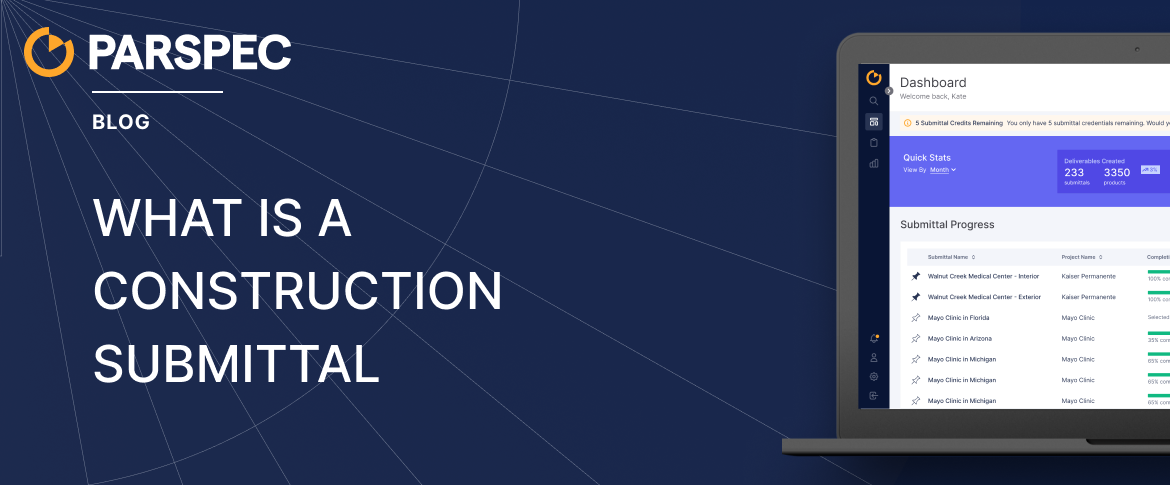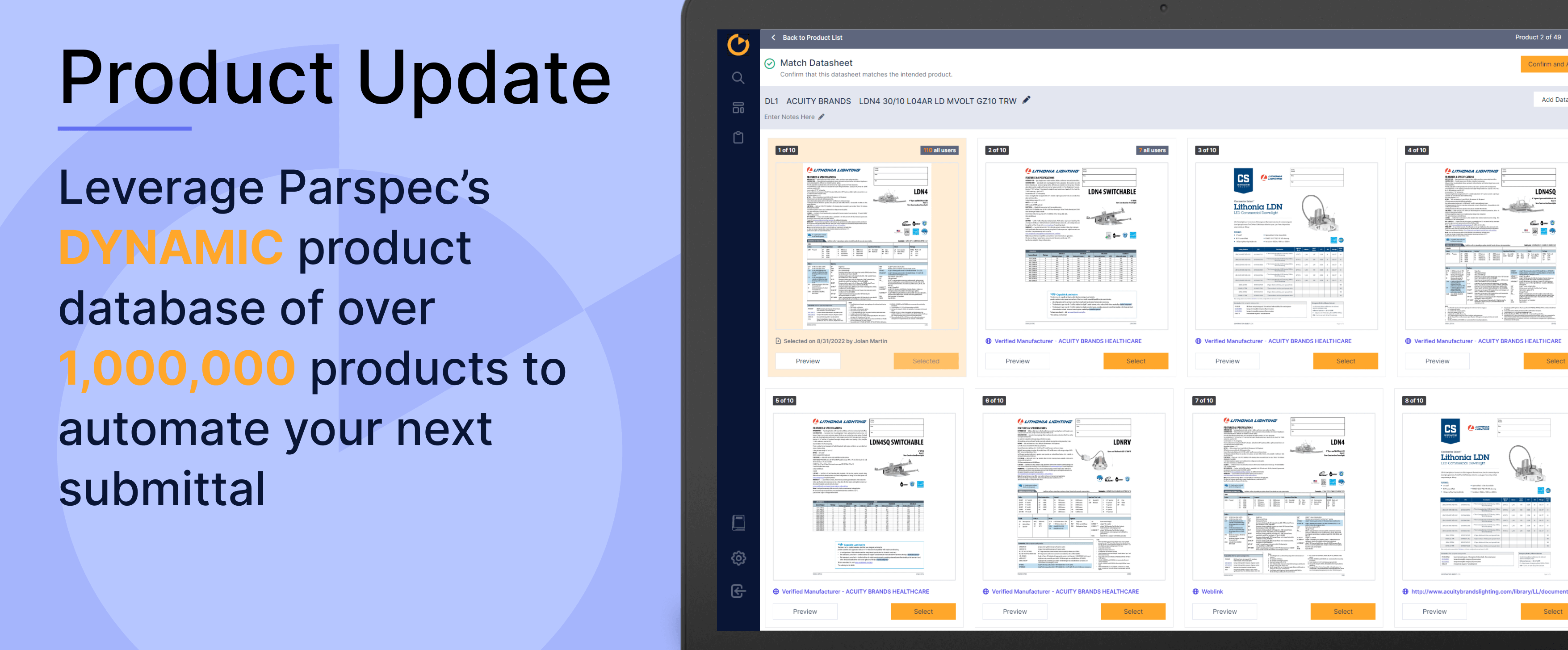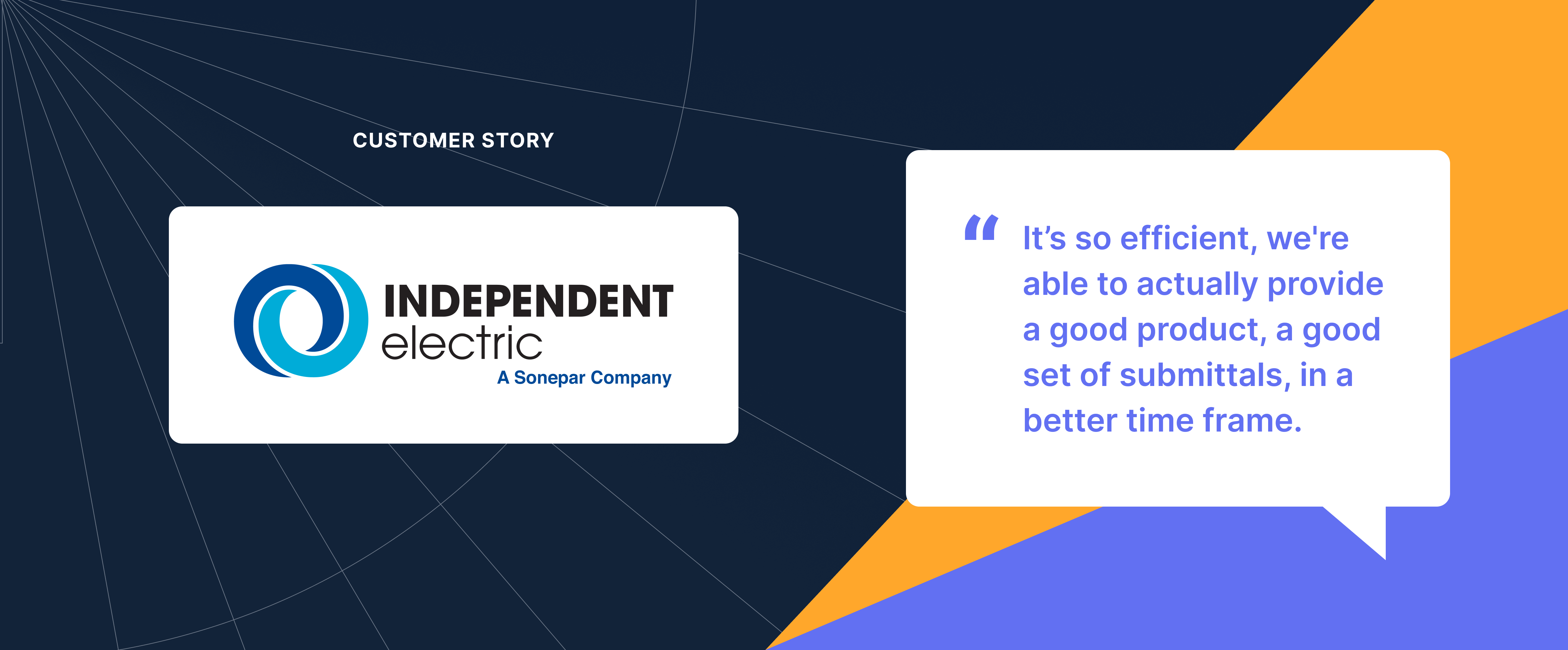
Essential Guide to Understanding Construction Submittal Packages
In every construction project, maintaining alignment on design choices, product selection, project timelines, and costs is essential. This is where construction submittal packages come into play – ensuring we meet deadlines, budgets, code requirements, and set standards for material or work quality.
What are construction Submittal Packages?
A construction submittal package is a critical formal document that includes all product specifications, datasheets, supporting documentation, and samples for a specific construction project. These submittals, gathered by contractors and provided to design professionals, are vital for gaining approval for equipment, materials, etc., before fabrication and delivery. A well-prepared submittal can positively impact cost, quality, timing, and overall project success.
What is included in a typical submittal package?
Documents included in the submittal can consist of:
- Product datasheets
- Accessory documentation
- Test data
- Warranty
- Dimensional drawings
- Installation instructions
Each product is clearly marked by type, part numbers, and manufacturer names. This detailed information is summarized in an organized table of contents and typically includes a professional cover sheet with relevant job information.
Transparency is critical in the submittal process, with every detail logged for stakeholder visibility. Large commercial projects can involve thousands of materials, fabrications, and equipment, making an “approved” submittal a vital quality control measure before on-site product arrival.
Who produces, reviews, and approves construction submittals?
Submittal approval workflows can vary from project to project, but can include any of the following stakeholders:
- Builders → General Contractors, Sub Contractors
- Specifiers → Architects, Engineers, Designers
- Sellers → Distributors, Manufacturer Representative Agencies, and Manufacturers
Typically, specifiers including Architects, Engineers, and Designers create a basis of design or select specific products for the project on behalf of the project owner. During the design process, fixture schedules are produced in construction plans before moving into the quoting phase of the project when builders and sellers get involved and need to track submittal creation and reviews.
Depending on the market, the formal submittal package is created by one of or a combination of the builders, specifiers, and sellers. It is critical for the documentation to be detailed, consistent, transparent, and easy to review or communicate any changes that may impact timing and project costs.
When are construction submittal packages compiled?
Ask anyone in construction and you might get a different answer depending on the type of stakeholder. The answer is that there is no specific time when submittals are required and it varies depending on the project. Oftentimes, submittals start during the pre-construction phase, other projects might require specific submittal schedules for different phases of the job, or in other cases, submittals aren’t required until final approval after a project has been quoted and awarded to a contractor to begin construction.
- Submittals can be created from the genesis of a project, hand-picked by the specifier (architect, engineer, designer, owner).
- Submittals can be created by the sellers (distributor or manufacturer’s representative agency) once a basis of design is established.
- Submittals can be created or aggregated by the builder (sub-contractor or general) who does design-build and has control over material selection for some respective projects.
How are submittals created?
Creating submittals can be very cumbersome and time-consuming due to immense data entry, lookup, and organization tasks. The more thoroughly a submittal is prepared ahead of time, the more likely it is to proceed smoothly from one approval step to the next, thus every detail needs to be documented carefully. Any person involved with the project can begin creating submittals, but many stakeholders will ultimately shape the final submittal package.
- As a first step, the submittal author may begin with a defined basis of design for the project, a fully specified product list, simply start from scratch, or anywhere in between. There’s no right way to start a submittal, but you must utilize a consistent process that scales easily. Typically the head specifier, including architects, engineers, or design consultants will shape the initial schedule of products or at least define a clear basis of design requirements. Once this initial list has been established, submittals can be created.
- The submittal author transcribes the product list into an organized table format including product Type, Manufacturer, and Part or Model Number.
- Product information needs to be located including product datasheets, accessory information, dimensional drawings, installation instructions, and even warranty information. This requires the author to either manually search catalogs or manufacturer websites, or utilize existing product databases maintained by sellers. Transcribing product schedules and looking up product datasheets alone can take many hours depending on the size of the project.
- Once a datasheet is located, the author will typically make annotations on the product datasheet to build out the exact part number based on the specifications. They will mark up datasheets with box-outs, highlights, shapes, or text notes to indicate all requirements are met. This mark-up information makes it easy for reviewers, including contractors and designers, to verify and approve final submittals.
- Once builders and sellers are aligned on the material selections and costs, the submittal is shared with the specifier for final review and approval. The specifier signs off and the project may officially begin.
There are many ways submittals can be created ranging from PDF editors to 3rd party software solutions, but none faster, more powerful, or more scalable than Parspec.
.png?width=5504&height=1356&name=Colored%20Logo%20(1).png)

.png)


